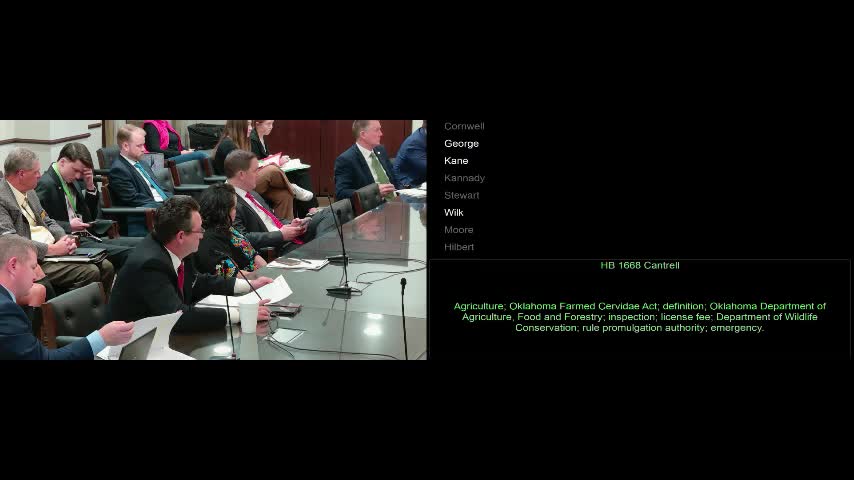Panel approves new licensing fee system for hunting regulations
February 17, 2025 | 2025 Legislature OK, Oklahoma
This article was created by AI summarizing key points discussed. AI makes mistakes, so for full details and context, please refer to the video of the full meeting. Please report any errors so we can fix them. Report an error »

In a recent meeting of the Oklahoma State Legislature, lawmakers gathered to discuss critical changes to wildlife management, particularly focusing on licensing fees for hunting and harvesting. The atmosphere was charged with concern as stakeholders voiced their apprehensions about the future of licensing under the proposed changes.
One lawmaker expressed uncertainty about the number of licenses currently issued, estimating it to be between 300,000 and 500,000. This ambiguity raised alarms among those in the industry, particularly regarding how these changes would impact their businesses and clients. The discussion highlighted a significant shift, as the proposed licensing would transition from traditional hunting licenses to a system managed by the agricultural department, sparking confusion over terminology and implications.
The lawmaker's concerns were echoed by others, emphasizing the need for clarity on how much these new licenses would cost and where clients would obtain them. "Anytime we're talking about increasing licenses for hunting, that's a conversation that everybody needs to be a part of," one member noted, underscoring the importance of stakeholder involvement in the decision-making process.
Despite the concerns raised, the committee moved forward with a motion to pass the bill, which was met with unanimous support—6 votes in favor and none against. As the meeting concluded, the implications of this decision loomed large, leaving many to ponder how these changes would reshape wildlife management and hunting practices in Oklahoma.
The outcome of this meeting marks a pivotal moment for wildlife enthusiasts and industry stakeholders alike, as they brace for the potential impacts of new regulations and fees on their activities. The conversation is far from over, and the future of wildlife management in Oklahoma remains a topic of keen interest and scrutiny.
One lawmaker expressed uncertainty about the number of licenses currently issued, estimating it to be between 300,000 and 500,000. This ambiguity raised alarms among those in the industry, particularly regarding how these changes would impact their businesses and clients. The discussion highlighted a significant shift, as the proposed licensing would transition from traditional hunting licenses to a system managed by the agricultural department, sparking confusion over terminology and implications.
The lawmaker's concerns were echoed by others, emphasizing the need for clarity on how much these new licenses would cost and where clients would obtain them. "Anytime we're talking about increasing licenses for hunting, that's a conversation that everybody needs to be a part of," one member noted, underscoring the importance of stakeholder involvement in the decision-making process.
Despite the concerns raised, the committee moved forward with a motion to pass the bill, which was met with unanimous support—6 votes in favor and none against. As the meeting concluded, the implications of this decision loomed large, leaving many to ponder how these changes would reshape wildlife management and hunting practices in Oklahoma.
The outcome of this meeting marks a pivotal moment for wildlife enthusiasts and industry stakeholders alike, as they brace for the potential impacts of new regulations and fees on their activities. The conversation is far from over, and the future of wildlife management in Oklahoma remains a topic of keen interest and scrutiny.
View full meeting
This article is based on a recent meeting—watch the full video and explore the complete transcript for deeper insights into the discussion.
View full meeting
